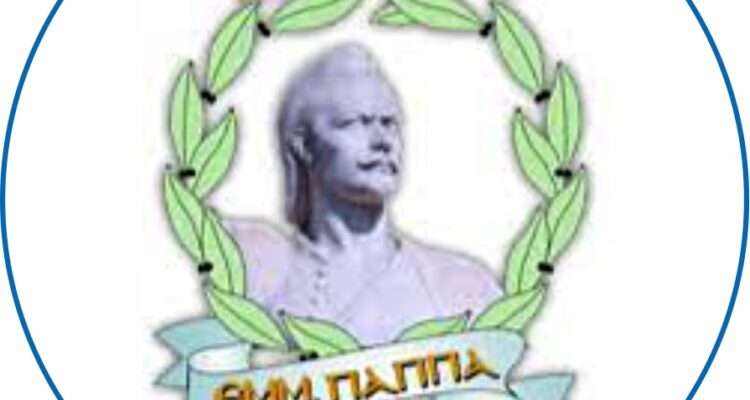On the hills of “Agiou Konstantinou”, “Grandiskou”, “Dreniou” and “Koutra” that surround the village of Agios Pneuma, remains and objects of settlements dating back to the early Neolithic era (2500 BC) and Bronze era (1200-1100 BC).
A cemetery with vaulted and box-shaped tombs is preserved on the “Koutra” hill, while a necropolis with carved vaulted tombs was found on the “Drenios” hill. On the “Agios Konstantinos” hill, the surface finds indicate that there was a Neolithic settlement on the site, as they include, among other things, double stone axes, chisels and figurines dating from about 2500 BC. It is assumed that the settlement was relocated around 1400-1200 BC. on the hill “Grandiskos” (or Gradiskos), which presents a natural fortification, when the Dorians invaded from the north. Today, the remains of two walls are preserved, as well as the foundations of a building where clay pithos were found. The site was inhabited until Roman times, as evidenced by various findings, but the name and the reasons for the decline or abandonment of the settlement remain unknown.
In the South-Eastern part of the new Souli settlement (after the last houses) there is a small hill named “Agrianista” or “Agrianda”. This toponym, with its marvelous power of resistance to the flow of time, vividly preserved the memory of the ancient Thracian people of the Agrians, mentioned by Herodotus and Thucydides. The hill is not natural but artificial and came from successive destructions of settlements. It is scattered with fragments (shells) of light-colored or black-colored vessels, which were produced by the ancient ceramic wheel of the 5th or 4th BC. century. These testify that the place was inhabited since classical times. Also, at the site “Haji Sulinar” there is an entire Roman necropolis, from which many inscriptions have been found to this day.
Near the village at the “Pyrgos” site, traces of a Neolithic settlement have been preserved, where polished stone tools and fragments of Neolithic and other vessels have been found.
From what we know so far from bibliography and the various manuscripts that have been deciphered, it seems that of the five Darnakochoria, only Vezniko (Agio Pneuma) and Tipoliani (Xriso) existed as settlements before the Turkish occupation, while Sarmusakli (Pentapoli), Soubaskio (Neo Souli) and Dovista (Emmanouil Papas) were created later, when the persecuted Greek populations of the Katepanikio ofZichna descended from the main body of Menoikio mountain towards the foothills.
Strange as it may seem, no Turks settled in Dovista at least during the second half of the 19th century and until its liberation in 1913. This liberation did not last long because after a few months the Bulgarian conquerors burned Serres and spread panic in the area.
Generally, both Turks and Bulgarians carefully avoided settling in the village, which resulted in the Turks settling in Sokol (today’s Sykia), which was a few kilometers east of Dovista, while the Bulgarians settled in Moukliani and Zeli.
Emmanouil Papas (1772 – 1821) started from the village of Dovista Serres (today’s Emmanuel Papas) with very little knowledge of grammar, and he developed into a large merchant of Serres with stores in Vienna and Constantinople.
In Constantinople, Emmanouil Papas, under the orders of Alexander Ypsilantis, in order to prepare the uprising of the Macedonians, buys weapons and munitions and on 23 March 1821, he loads them on a ship and leaves for Mount Athos, which was considered as the most “suitable place” for the impending uprising. At that time, 3,000 men were in the 20 monasteries of the Mount Athos, a far from negligible number for recruitment, while several of them had already been initiated into the Filiki Etairia.
Emmanouill Papas disembarks at the Monastery of Esfigmenou and immediately triggers the Revolution, starting with the surrounding villages and then continuous to the rest of them. On June 2, the Greek forces advance towards Thessaloniki, but in essence it is a “rebelo askeri” that cannot advance without reinforcements, munitions and, most importantly, leadership. That is why the Revolution in Halkidiki will shrink quickly, and the revolutionaries will spend 4.5 months (June – October 1821) blocked in the two peninsulas. It is the time when Dimitris Ypsilantis calls the Pope “plenipotentiary leader and commander of the military forces of Mount Athos, Kassandra and Thessaloniki”. But the revolutionary movement of Emmanuel Papa is coming to an end.
The fall of Kassandra and the “reactionary attitude” of the monks make the situation hopeless, while Mehmet Emin Pasha of Thessaloniki invades as a fierce, determined aggressor, destroying, burning, slaughtering and razed everything. Emmanouil Papas will be forced to leave the Monastery of Esfigmenou, enter a boat and take the direction of Hydra, having with him, his young son Giannakis as well as his personal record.
However, the hardships up until then, the fatigue and also the disappointment had worn down the health of the rebel of Serres. As a result, he suffered a heart attack and died, before the ship reached Hydra, where his body was buried on 5 December 1821 with honors. On 17 May 1966, his bones were moved to Serres and placed at the base of the hero’s statue, which adorns the central square of Eleftheria.
Copyright 2023 © Created By Diadyktio, All Rights Reserved.
To provide the best experiences, we and our partners use technologies like cookies to store and/or access device information. Consenting to these technologies will allow us and our partners to process personal data such as browsing behavior or unique IDs on this site and show (non-) personalized ads. Not consenting or withdrawing consent, may adversely affect certain features and functions.
Click below to consent to the above or make granular choices. Your choices will be applied to this site only. You can change your settings at any time, including withdrawing your consent, by using the toggles on the Cookie Policy, or by clicking on the manage consent button at the bottom of the screen.

Congratulation!